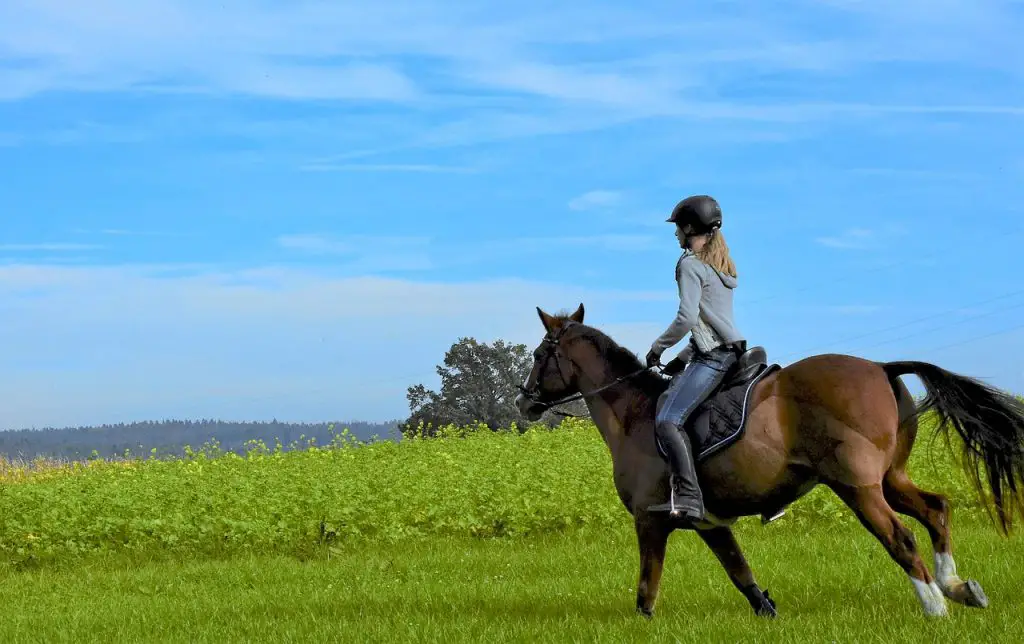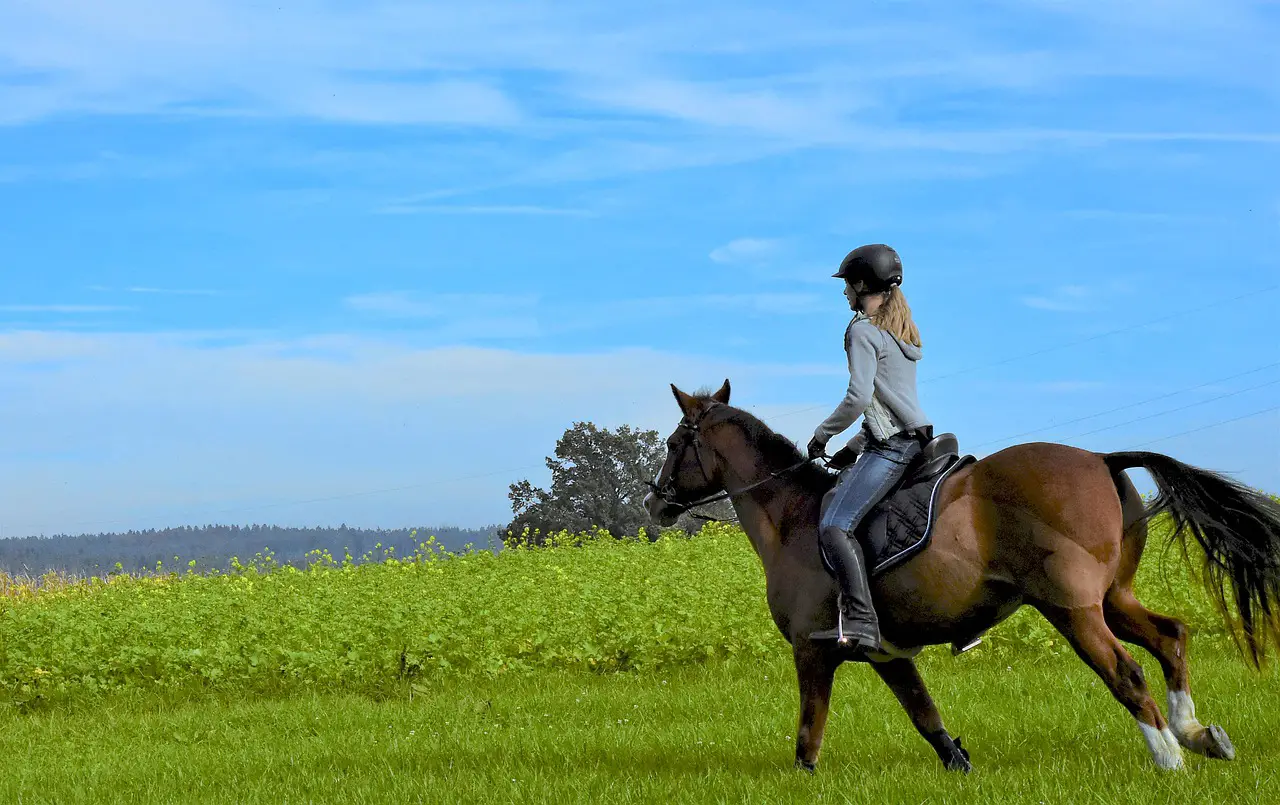Last Updated on March 2, 2022 by Allison Price
Recently, I was able to help a friend who had problems getting her mare from trot to canter. It was frightening to move from trot into canter. The mare might panic, rush or cut sharply in turns. The mare seemed to be saying Let’s just keep the trot!
These issues have been encountered by riders of all abilities. These photos show the steps I took to help my mare. They can also be used to benefit other horses of all gaits.
Horses may balk or buck during transition to canter. There are many reasons for this, including:
- Cinch constriction. Cinch constriction is a condition in which horses feel the cinch differently when they canter. This can lead to resistance as they believe something has grabbed them.
- When moving faster, balance is crucial. Unbalanced horses will not be able to move forward quickly and calmly. They may also feel unsafe.
- There is no GO button The horse will not respond quickly to a request for canter if the rider requests it.
- Giddy up… but only a little! The scared rider is asking the horse to move forward, but pulling back on the reins. This blocks the horse from moving forward. The rider may ask for forward, while pulling back on the reins to get the horse to move forward.
- Last but not least, there is the care issue. Your vet will be able to diagnose any issue, including a sore or ill-fitting saddle or ulcers.
Balance was the key issue with my friend’s mare. Because she was out of balance, she would fall and cut into the canter and bucks. You’ll notice a change in her expression as she follows the steps.
I first wanted to observe how the mare canter on a long line. She has now picked up a canter, tightened the lead, but her centre is too far forward. She has fallen to the outside of the circle. We’ll be holding her up if we keep going without stopping to teach her a new position and self-carriage. This is what I call “rein-carriage” and not self-carriage. If this continues, the horse could fall if the rider is not holding the reins up. We can understand why the horse is resisting and bucking, as she is trying to warn us she might fall.
I return to the groundwork during the walk and teach her how to bend her neck and head through her shoulder and ribs. She will become more competent by moving over step by step and releasing as she does so. You will notice that I have a slight counter-bend here. This is because I would be setting my right balance/left bend, and thus the left lead. Continue doing this slowly until she is able to bend left and balance to the right for at most six steps.
I allow a little forward on a small circle and am looking for softening to my inside while maintaining a bit bend. The nose is being guided back by me, while I drive the ribs with my horseman’s stick. But you can see that she is very sticky and adept at using her mass not to bend. She is also very heavy with her feet and remains a solid mass through her shoulders, ribs and hindquarters.
She is now moving to her right, in a sidestepping motion that resembles an introductory leg yield. The left lead bend is exaggerated by the lateral movement and crossing of the feet. This is why I take my time to watch the feet move over. Step by step, step by step… We don’t want the horse to be rushed here as this will only cause more brace in her body.
This allows her to move forward even more. She is now able to maintain a loose lead and some left bends, allowing her to go further. Notice how her inner ear is focused on me. Each request requires me to get the physical yield or movement. But also, the ear to look at me and make a connection, even if only for a second.
It is important to take the entire process slow on both sides. You’ll almost always find one side easier than the other. You should spend more time on the harder side until you are equal. Horses are best when they can be ridden slowly and with less difficulty.
This nice canter is the result of all our hard work. You can see the slack rope and balance. Her ear is on me. Although I’m still focusing my stick on her ribs now, it’s just a suggestion.

That terrible canter remains despite all the preparation. She didn’t attempt to make a huge buck like she did before. After asking her to canter briefly, I slow down her to get her to bend and give way to her shoulders. It’s OK to fail at something. If you don’t know if it’s not working at the trot, or at the walk, then stop pounding on at high speeds.
A better canter will be possible if you take the time to correct your balance and bend. My right seat bone is slightly bent, and I press with my rein and inside leg. You should feel your horse’s feet and take a step back. Then, release slowly with each step to the left. It won’t get better if the rider just applies the aid and doesn’t let go.
By adding speed, you can see the canter is just a second away. Notice how I want to keep her head towards the inside (right), and balance to the outside (left). Many of us were taught that the head should be to the left in order to move to the right. This might work for the first few trot-to canter runs, but it is not a good idea. It can cause the horse to become a lead rider if you do it too often.
Success! This is a canter that I would love to ride, and one that will be good for my horse. Notice her forward movements and happy expression. It’s important to remember that foundation training does not require a horse to be tacked up against a lot. First, the horse must learn to move forward with ease. Only then can we ask for more compression longitudinally. This mare has plenty of compression in her body, even though she is still in the beginning stages.
Each step should be taken slowly. This was all I could do in one session. The next day, I would review each slow pace and make improvements before I couldter again. Horsemanship can be a daily practice and the fun part is in the building blocks.
Reward and Release
Every lesson with a horse should have a reward as well as a release. The release with green horses such as this mare must be obvious
I ask the mare to move her shoulders in this slight turn counter-bend. You can see that she is very sticky and resistive.
I won’t let her stay still for too long. As soon as she starts to move and feels the pressure, I will completely release the aid and allow her the relief of being able to move.
Horses can’t tell if we are too strict in the beginning or micromanage the aids.



